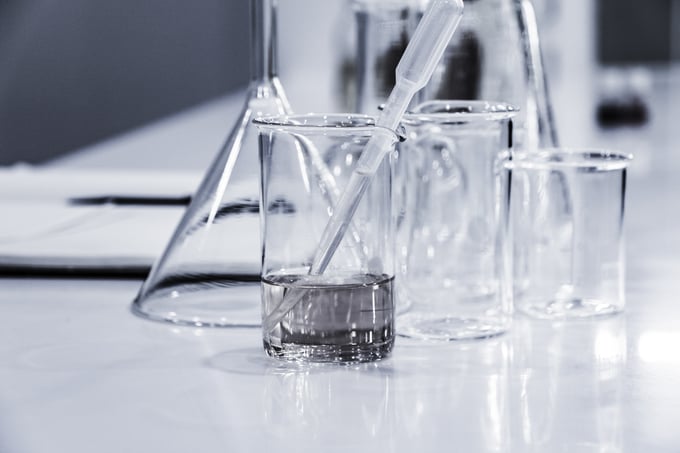
Raw materials are the most crucial part of making quality bricks. Consistent, high quality raw materials combined with sound processes normally result in good quality fired ware. Unfortunately, in the real world, raw materials vary in quality and consistency. Variations in raw materials such as particle size, fired color, carbon content, and shrinkage are routinely measured during exploration, mining, stockpiling, and production. Another characteristic of raw materials that is critical and should be measured and monitored is the level of soluble sulfates present in the raw materials used to make brick.
SOLUBLE SULFATES
Soluble sulfates can be present in the mined raw materials, additives, and water used to make brick. The soluble sulfate levels in these components will normally vary with time depending on the source. The soluble sulfates that are of the most concern for brick makers are calcium sulfate (CaSO4, gypsum) and magnesium sulfate (MgSO4, epsom salts). Gypsum is a very common occurrence in clay formations.
THE EFFECTS OF SOLUBLE SULFATES
The presence of soluble sulfates in brick can result in quality issues that range from making unsaleable brick due to the appearance of scum to making brick that will spall while in the wall and will need to be replaced.
The first effect that that will be noticed at the plant is scumming on the surfaces of the brick. Scumming results from soluble salts being deposited on the surface of the brick during the drying process and then being burned onto the surface during the firing process. There is no way to remove scumming from fired brick without burning the surface and further ruining the appearance.
The second effect might become apparent while the brick are on the yard or after the brick are in the wall. The brick may begin to turn white due to efflorescence, the deposition of soluble sulfates on the surface of the brick through capillary action. Efflorescence can usually be cleaned with a stiff brush but will show up repeatedly until the soluble sulfates are depleted in the fired brick.
The third and most serious effect that may occur is crypto florescence, the formation of crystals beneath the surface of the brick. The blooming crystals may result in the crumbling apart of the brick known as spalling. This will result in either the affected brick or all of the brick needing to be replaced depending on the extent of the damage.
measuring soluble sulfates
Soluble sulfates are normally not detectable in the mine, additives, or water supply. The exception to this is in the case of gypsum crystals which may be highly visible at a mine site. When this is not the case the presence of the soluble sulfates should be confirmed and the levels measured and monitored.
The use of a new raw material or the suspicion that there are soluble sulfates present in a raw material, additive, or water source might require testing to confirm the presence of the soluble sulfates and the identification of the cation. This initial testing can be performed by a laboratory that has an ion chromatograph. This testing is a good first step in gaining an understanding of the type and level of soluble sulfates that are present. Please note that the sample of raw material, additive, or water should be representative of what will be used in production. An unrepresentative sample can give an inaccurate or skewed result.
In the case where the soluble sulfate levels of the raw materials, additives, or water is consistent it may not be necessary to test for soluble sulfates regularly. This is not normally the case as soluble sulfates usually vary within clay formations, additives, and water sources. Unfortunately ion chromatography is not practical to use for measuring and monitoring soluble sulfate levels on a regular basis. The testing has to be done at an outside lab which is time consuming and may be prohibitively expensive.
Measuring soluble sulfates on a consistent basis whether it is daily, weekly, or each shift can be performed relatively easily, quickly, and inexpensively using an ion specific meter. An ion specific meter measures the soluble sulfate levels in a 10mL sample of water that has been mixed with a reactant. As this is the case, water can be measured directly without having to do any sample preparation other than possibly dilution with deionized water. The water can be tested with the meter and the soluble sulfate level can be read directly off of the meter in parts per million. Raw material and solid additive samples such as bottom ash or sand need to be prepared using deionized water in order to be tested. The sample preparation involves mixing equal weights of the dry additive and deionized water, agitating the sample, and allowing the soluble sulfates to leach into the water for 24 hours. After 24 hours, the clear water off of the top of the sample is drawn off and tested using the ion specific meter. The soluble sulfate level can then be read off of the meter in parts per million. If either pure water samples or leached water samples have soluble sulfate readings beyond the range of the meter, the samples will need to be diluted until the results can be read from the meter. The result will then need to be multiplied by the dilution factor to be converted to parts per million.
soluble sulfate levels
Once there is an understanding of the soluble sulfate levels in the different materials being used the soluble sulfate levels can be recorded at the desired intervals and minimum, maximum, and average values can be calculated. The maximum values can then be used to determine the worst-case scenario for the soluble sulfate levels.
The soluble sulfate levels are the most relevant factor that determines how much barium carbonate or other additive will be needed to tie up the soluble sulfates in the process to prevent scumming, efflorescence, or crypto florescence. The soluble sulfate levels are not the only factor that is involved in preventing soluble sulfates from being a problem.
other factors to consider
Other factors that can affect scumming include the rate of drying of the green brick, the amount of time the barium or other anti scumming additive has to react with the soluble sulfates, and the amount of agitation the mix experiences while the anti scumming additive is in the mix all have an effect on the effectiveness of anti scumming additives.
The main factor besides the amount of soluble sulfates that can prevent efflorescence and crypto florescence is the amount of water that can travel into and throughout the fired brick. This amount of water is directly correlated to the fired bricks cold water absorption, or CWA. A low enough CWA will prevent excess water from being sucked into the fired brick and from circulating through the brick promoting efflorescence and crypto florescence.
Please be sure to contact us if you have any questions.





